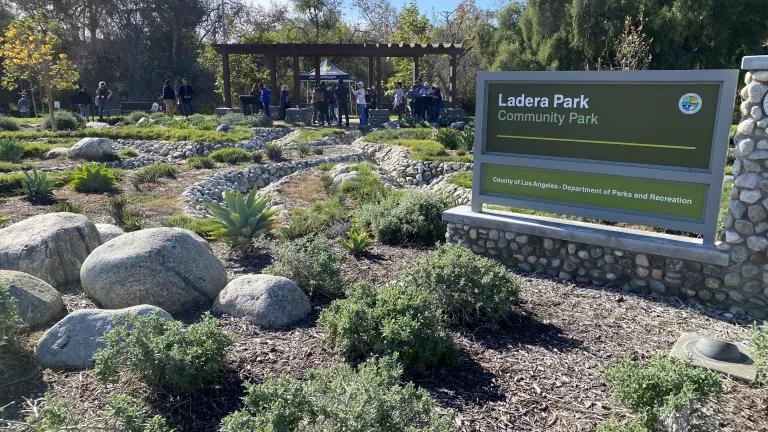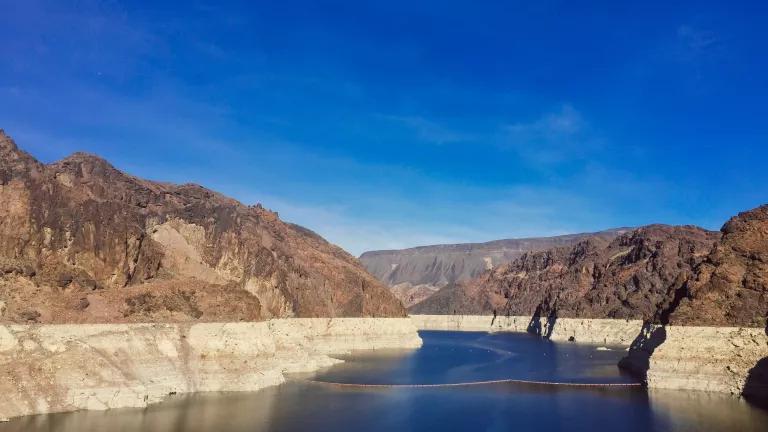Today, NRDC and several of our colleagues in the water agency, business and conservation world are proposing an alternative for analysis in the Bay Delta Conservation Planning process. We believe that this alternative provides a fertile approach for resolving California’s perennial environmental and water supply challenges in the San Francisco Bay-Delta and will allow us to restore this incredibly important estuary and secure California’s water supply future for decades to come.
The basic idea behind this alternative is to invest in a smaller, less expensive water conveyance tunnel around the Delta and use the billions in dollars saved (as compared to a much larger set of twin tunnels) to invest in more sustainable local and regional water supplies, as well as new water storage south of the Delta, levee improvements in the Delta, and habitat restoration in the Delta. This approach removes the Hobson’s choice that is frequently and falsely set up in Delta debates: that we have to choose between adequate water supplies and a healthy Bay-Delta. In the 2009 Delta Reform Act, the legislature correctly recognized that in order for the state to restore the Delta and improve water supply reliability, California must reduce our reliance on the Delta as a source of water supply. In fact, a healthy ecosystem ensures that our water supply will be cleaner, more predictable and more stable. It’s time for our on-the-ground planning to catch up with this policy reality.
No doubt many BDCP participants and observers will focus exclusively on the smaller tunnel aspect of this proposal to the exclusion of its other pieces. But the size of the tunnel is only one aspect of many included in this proposed alternative. The size of a new Delta diversion facility is important for comparing the return on the investment that we as Californians will get if we choose to invest our money in $14 billion worth of new water infrastructure in the Delta, or choose to invest half of that amount in a new Delta facility and devote the savings to other critical water management improvements, like $5 billion in new water recycling plants and efficiency upgrades that will yield greater water supply than new Delta tunnels. We cannot make sensible policy choices unless we look at these options together, as water managers do in the real world, and decide which option offers the best return on our limited dollars.
Ultimately, how any size Delta diversion facility affects the ecosystem turns on how that facility is operated. We can and have done considerable environmental damage with the diversion facilities that we already have in place today in the form of the giant state and federal pumps in the South Delta. To prevent that type of damage in the future from any Delta facility – new or existing, large or small – we need science-based operating rules and a decisionmaking structure that ensures that those rules will be followed. That’s why another aspect of the alternative that we propose today incorporates the operating rules developed by the state and federal fish and wildlife protection agencies, and described on pages 1-16 of this powerpoint. We believe that these operating rules represent the best effort by state and federal biologists to date to design an operating regime that meets the needs of the chronically parched Bay-Delta for more flow at key times of the year. The agencies have spent months refining this proposal, culminating in the most recent version known as “combined species scenario 5 scope 3c uncapped” (catchy, eh?). This operational proposal reduces water exports from the Delta, at least until fish recover, consistent with the best available science. We believe this operational proposal should serve as the starting point for analysis of operations for any new facility.
From an environmental perspective, this new alternative includes science-based flow and pumping rules and near-term restoration of 40,000 acres of habitat to meet the needs of the estuary and its fisheries – including both listed species and California’s commercially valuable salmon runs. What is truly exciting is that this new approach delivers better environmental results in a package that could also deliver more water, greater reliability and lower cost for water users south of the Delta.
The legislature has declared that we must reduce reliance on diversions from the Delta. Water Code § 85021. It explained that the way to do that is by implementing a “statewide strategy of investing in improved regional supplies, conservation, and water use efficiency” and directs each region that depends on water from the Delta watershed to “improve its regional self-reliance for water through investment in water use efficiency [and] water recycling” among other things. Our alternative puts the 2009 Delta Reform Act policy directive into a framework for action and allows us to restore the Delta while meeting our water supply needs. We hope that this new portfolio-based approach is the breakthrough that BDCP has been looking for.



